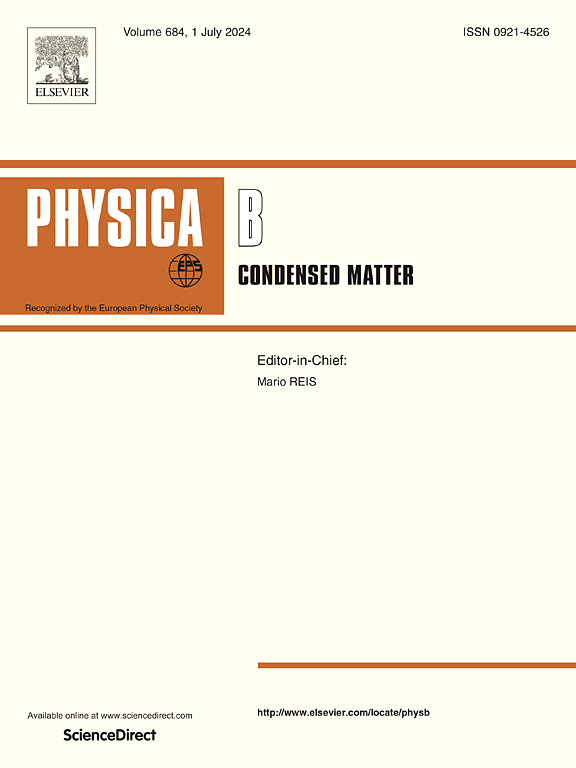High-performance photodetectors based on ZnIn₂S₄ and ZnIn₂S₄/Bi heterojunctions
IF 2.8
3区 物理与天体物理
Q2 PHYSICS, CONDENSED MATTER
引用次数: 0
Abstract
Two-dimensional (2D) materials are renowned for their exceptional optical and electrical properties, making them highly promising for various photodetector applications, including photochemical (PEC) photodetectors. Among these materials, ZnIn₂S₄ stands out as a typical vision-responsive N-type 2D tera-chalcogenide compound. Due to its unique physical properties, such as high carrier mobility, excellent photochemical conversion efficiency, robust photochemical stability, and low toxicity, ZnIn₂S₄ has garnered significant research interest. However, most studies on ZnIn₂S₄ have focused on thin-film solar cells and photocatalysis, with its potential as a photodetector remaining largely unexplored. In this study, we developed a PEC photodetector based on ZnIn₂S₄ thin films, fabricated using a pulsed laser deposition method under ultra-high vacuum conditions. This method resulted in films with minimal impurities and high material uniformity. The resulting photodetector exhibited excellent photoresponse, tunable characteristics, and impressive cycle and time stability. Despite these advantages, ZnIn₂S₄ has inherent limitations, such as restricted light absorption capacity and rapid carrier recombination rates. To address these challenges, we fabricated a photodetector featuring a vertical heterojunction of ZnIn₂S₄ and Bi. The built-in electric field at the heterojunction interface effectively promotes the separation of photogenerated carriers, thereby enhancing the photoresponse characteristics of the photodetector. Compared with other photochemical photodetectors such as SnSe2/ZnS, InSe etc, this device exhibits a significantly higher photocurrent density of 42.08 μA/cm2, which is 33.1 and 111.3 times greater than that of SnSe₂/ZnS and InSe, respectively. Additionally, it demonstrates a high responsivity of 139.16 μA/W, which is 8.85 and 28.4 times higher than that of SnSe₂/ZnS and InSe. The performance of the device meets the standard of high performance photochemical photodetector and has great potential in future photoelectric applications.
求助全文
约1分钟内获得全文
求助全文
来源期刊

Physica B-condensed Matter
物理-物理:凝聚态物理
CiteScore
4.90
自引率
7.10%
发文量
703
审稿时长
44 days
期刊介绍:
Physica B: Condensed Matter comprises all condensed matter and material physics that involve theoretical, computational and experimental work.
Papers should contain further developments and a proper discussion on the physics of experimental or theoretical results in one of the following areas:
-Magnetism
-Materials physics
-Nanostructures and nanomaterials
-Optics and optical materials
-Quantum materials
-Semiconductors
-Strongly correlated systems
-Superconductivity
-Surfaces and interfaces
 求助内容:
求助内容: 应助结果提醒方式:
应助结果提醒方式:


